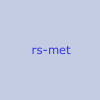it's been a while since the last time i posted about RS-MET product development news here. this was not because of lack of activity - i was just breeding over something new and big that consumed all of my time. i'm planning to come up with a modular system a la Reaktor/PD/MaxMSP/SE/SM/etc. it's going to be called "Liberty" - the reason for this choice presumably obvious.
i'm now at a point where the general under-the-hood framework seems to be (mostly) done. the next steps will involve some decisions about the user interface and that's why i come here at such an early (shall we say -"pre alpha" ) stage of development. i want your input and suggestions before i make these decisions. the screenshot below shows what i have got so far:

Uploaded with ImageShack.us
those of you who are familiar with one ore more of the abovementioned modular systems will probably correctly guess that in the main area, you can insert and connect the modules. the treeview to the left represents the patch structure as ...well...tree....in a windows-explorer alike style. you can navigate through the patch by clicking on tree-nodes as well as double-clicking on (non-atomic) modules in the patch diagram. you can also move up one level in the hierarchy by double-clicking into some empty area. that will most probably stay so.
but now for the first question: what should happen when double-clicking on an atomic (i.e. non-container) module? i'm considering two options:
1.) re-using the same area as for the diagram to show a GUI for the atomic module (think, for example, a waveform-view with facilities to set loop-points etc. when the module in question is a sample player)
2.) leaving the diagram area alone and present the GUI for the atomic module in yet another area of the user interface (probably below the tree/diagram.
option 2 would also raise the question what to show in the additional area when no atomic module is selected - perhaps a global performance parameter and or preset browser interface could be shown in this case?
maybe i should say that i'm not planning to provide facilities to actually build a GUI for the patch. instead, the low-level parameters of a patch shall be edited directly on the patch-diagram level and then i want to have higher level performance parameters (or meta-parameters) that can be routed to low-level parameters and controlled from a global performance screen.
for those of you who feel like noodling around with this early pre-alpha, here it is:
www.rs-met.com/software/betas/Liberty_pre_alpha.zip
there are still a lot of bugs, though - so if you prefer to not try it, nevermind. in any case, i'd be happy to hear what you think about the user interface options.
thanks for reading, robin













